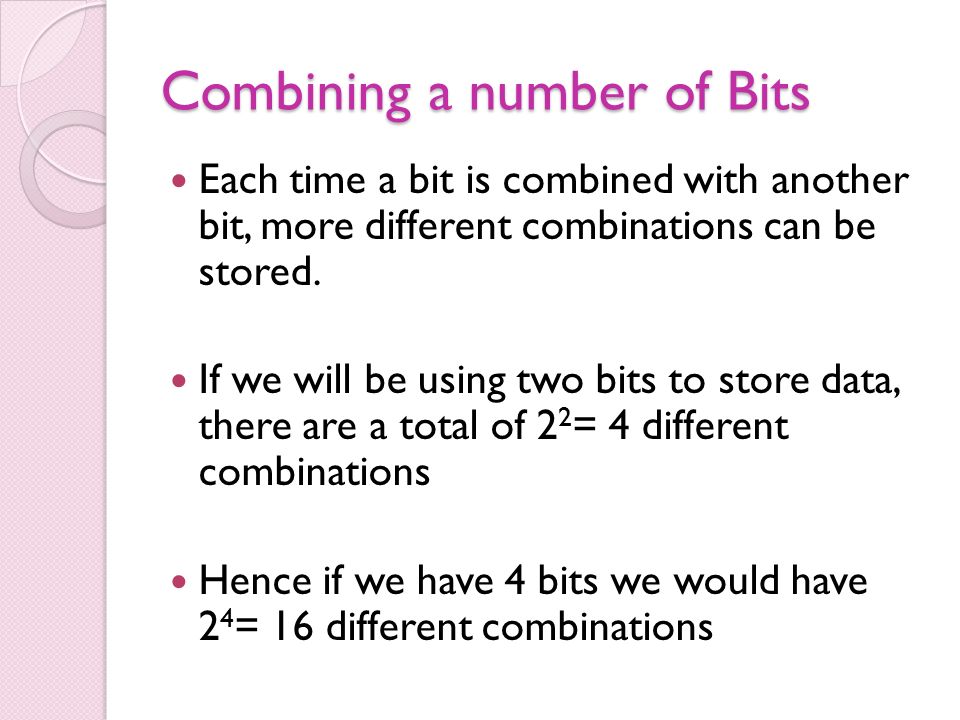What is a BIT:
—As we know a bit is
the smallest unit of data in a computer system
—A bit can either be a
12 or a 02
—This means that with
one single bit we can only represent only 2 different values
—12 =
110 and 02 = 010

Representing Text, Pictures etc…
—Text, pictures and
videos are also stored in a computer system using a sequence of binary digits
— Using one single bit
is not enough due to its small size
—If we want to store a
large quantity of data many more bits are required.
Combining a number of Bits:
—Each time a bit is
combined with another bit, more different combinations can be stored.
—If we will be using
two bits to store data, there are a total of 22=
4 different combinations
—Hence if we have 4
bits we would have 24= 16 different combinations

Working:
—With the following
number of bits how many combinations could be created?
1.5 bits
2.3 bits
3.6 bits
4.8 bits
Answers
1.5 bits = 25 à 32 combinations
2.3 bits = 23 à 8 combinations
3.6 bits = 26 à 64 combinations
4.8 bits = 28 à 256 combinations
In the Early Days
—When computers were first introduced they were simply used for performing calculations
—After a while scientists realized that computers can also be used to store and edit text in different ways
—The problem was that a computer could only understand binary (1s & 0s)
BCD(binary coded decimal)
—Very early memory codes.
—Each decimal number converted to binary equivalent individually.
—For example 39=0011 1001
—Each decimal digit is converted individually to four bit binary
—4 bits=>16 different characters.
—Only sufficient to represent 10 numbers.
—6 combinations are redundant.

6 bit BCD
—To represent other characters on keyboard 6 bit BCD is used.
—6 bits=> 64 different characters.
—Sufficient for 26 alphabet+28 special characters+ 10 digits.
—Can only present small letters.
—What about capital??
EBCDIC
—64 different BCD codes are not sufficient for all the English letters upper and lower.
—So Extended Binary coded decimal information interchange is used.
—Its 8 bit code=>256 different symbols.






0 Comments
Thanks You....